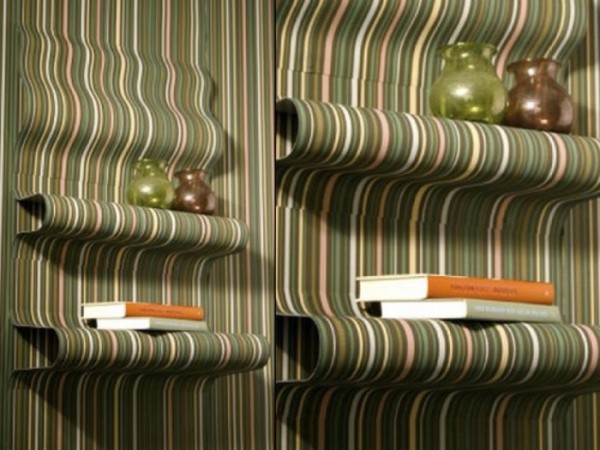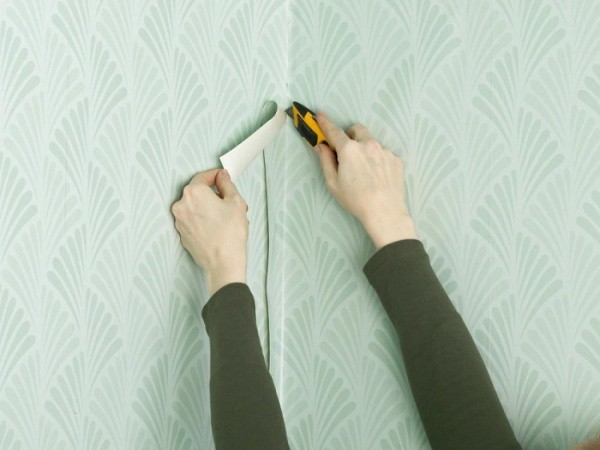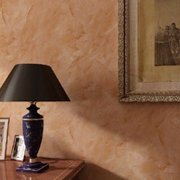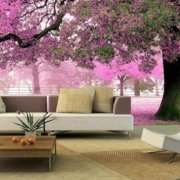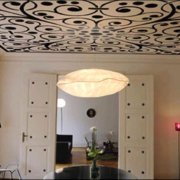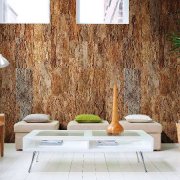Vinyl wallpaper on a non-woven basis: material features
The domestic wallpaper market is now more than large. A person who does not have much experience in repair can get confused very quickly and buy not at all what he really needs.
After all, there are a huge number of types of wallpaper, each of which has its own advantages and disadvantages. Vinyl or non-woven wallpaper has worked very well.
The content of the article
The advantages of non-woven vinyl wallpaper
You should not look for any tricks here, because in them you can find many positive qualities that are appreciated by the master.
This type of wall covering has simply unique qualities. Its basis is polyvinyl chloride, which is applied to non-woven.
Such material is very good in operation, it has excellent characteristics:
- Pretty tight - It is ideal for gluing on walls with small irregularities or tubercles.
- Does not sit on the surface.
- Easy to maintain - non-woven base provides reliability on any surface (it can be both putty and wood - the material has practically no effect on the quality of the wallpaper).
- It glues well both vertically and on a horizontal surface.
- There is a large variety of textures, which allows the master to create an unforgettable atmosphere in the room.
Note. Such wallpaper material has a large number of advantages, which are worth paying attention to. Another important factor is that such a wall covering is universal. It can be used both in the living room and in the office, and glued both to walls and ceilings.
Disadvantages:
- But, for the sake of completeness, we can highlight some disadvantages. And among them, one important one is that air does not penetrate inside.
- This is due to the high density of the material. But this problem has already been solved.
- Modern manufacturers produce non-woven vinyl wallpapers that can let air through.
- This became possible due to the use of foamed raw materials in the production.
All other characteristics of the coating did not give in to changes.
How is the material used during work?
Experienced craftsmen with a hunt for repair choose vinyl and non-woven wallpaper. The difference between such a coating and another is very large.
Due to the fact that the basis for them was non-woven, they have a fairly strong base. This contributes to the fact that several balls of paints can be applied to them and, moreover, the material will not be damaged.
Note. They are ideal for old apartments and houses, where there is always the possibility that water will flow through the walls. Under the cover, this will not be visible, and the non-woven fabric will not allow the wallpaper to sit down.
Features of pasting vinyl wallpaper on a non-woven basis
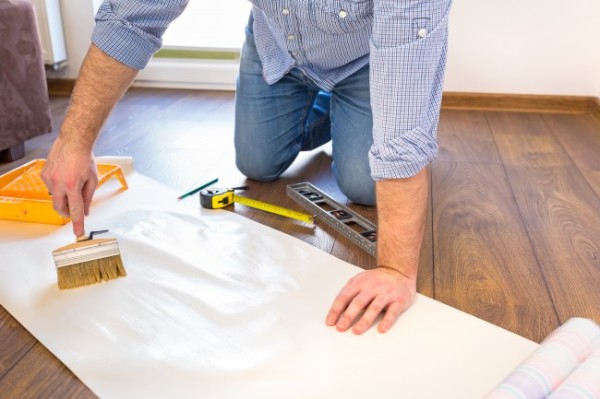
To paste them, you don’t even need to spread the wallpaper with glue - because the non-woven fabric absorbs glue quickly, it can be smeared directly on the wall or ceiling (see How to glue non-woven wallpaper correctly) Such a system for gluing a room is very convenient, because it allows you to do the job in the shortest possible time.You can also glue wallpaper on the walls or ceiling and, moreover, do not be afraid to smear the whole room with them (the glue is already on the wall).
Vinyl wallpapers on a non-woven basis have two balls - vinyl and non-woven:
- They are very easily separated from each other, so it will not be difficult if they are worn out.
- Peel off the first vinyl ball, and on the remaining (non-woven), stick other wallpapers. This will save you time and money.
But, given this factor, then, first of all, you need to correctly prepare the wall covering.
Preparation for work

So:
- The first thing to do is to carefully putty wallsso that no pits or cracks remain on them. The quality of the putty is of great importance, because the quality of the entire repair depends on how it will be held on the wall.
- If the walls are extremely even, then putty is not necessary. Such wallpapers are perfect for holding on any surface. You just need to close up the fossae and tubercles.
Note. The best result can be achieved if the glue is also non-woven. So the master will get a good result, and the wallpaper will serve more than one year.
Tools that will be needed when gluing vinyl wallpaper on a non-woven basis:
| Tool name | What is it for? |
| Roller (may have short or medium pile) | They apply glue to the surface (walls or ceilings) |
| Rubber roller or plastic spatula | To smooth wallpaper |
| Brush | The joints and other surfaces to which the roller cannot reach are smeared with it. |
| Small rubber roller | It is used to swing joints between wallpaper |
| Glue bowl | Must be comfortable and durable |
| An item that will help stir glue | Even a stick may come |
| Knife | To cut the wallpaper |
| Pencil | To make marks on the wall |
What technology do you need to glue
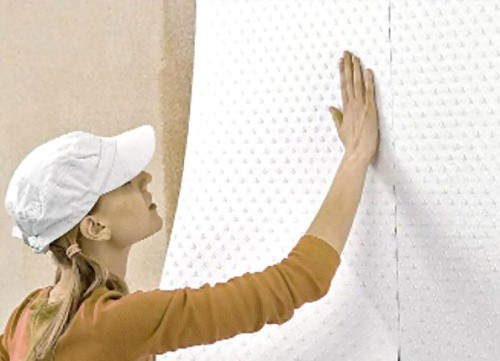
The instructions for this process are quite simple:
- Even beginners in the repair business will be able to cope with it. Vinyl wallpaper on a non-woven basis can be easily glued with your own hands without calling a professional master.
- If you do everything according to the rules and advice, it will turn out not worse.
- Experts advise starting gluing from the window. Using the level you need to make a straight line on the wall.
- From this line, and will need to carry out wallpapering. After that, you need to smear the surface of the walls. The width of the first glue application should slightly exceed the width of the roll itself.
- Most manufacturers are developing vinyl wallpapers either narrow (a little over half a meter wide), or wide (about a meter).
- The roll does not have to be rolled out all at once. You can cut pieces from it to the extent of the work. If the wallpaper is without a picture, then working with them is generally simple. You can cut the pieces one by one. If there is a drawing on them, then it will be necessary to select so that everything fits together.
Note. Non-woven vinyl wallpapers can only be glued end-to-end. They practically do not settle, so they do not need to be glued to each other.
Nuances in the work
Like any others, they cannot be glued there perfectly:
- Almost always because of this, waves are produced that spoil the whole picture.
- To avoid this outcome, you need to glue the wallpaper canvas so that it goes a few centimeters (up to ten) onto the second wall. The second sheet must be glued with an overlap on the first. So no traces will be visible.
- The price of such wallpapers is fully consistent with their quality and durability. Besides the fact that they are very strong and reliable, non-woven vinyl wallpapers also regulate the sound insulation in the room, which makes it even more convenient and cozy.
The videos in this article will help the reader better understand all the benefits of such wall coverings. Here you can find a lot of additional information that will be useful for a beginner.

